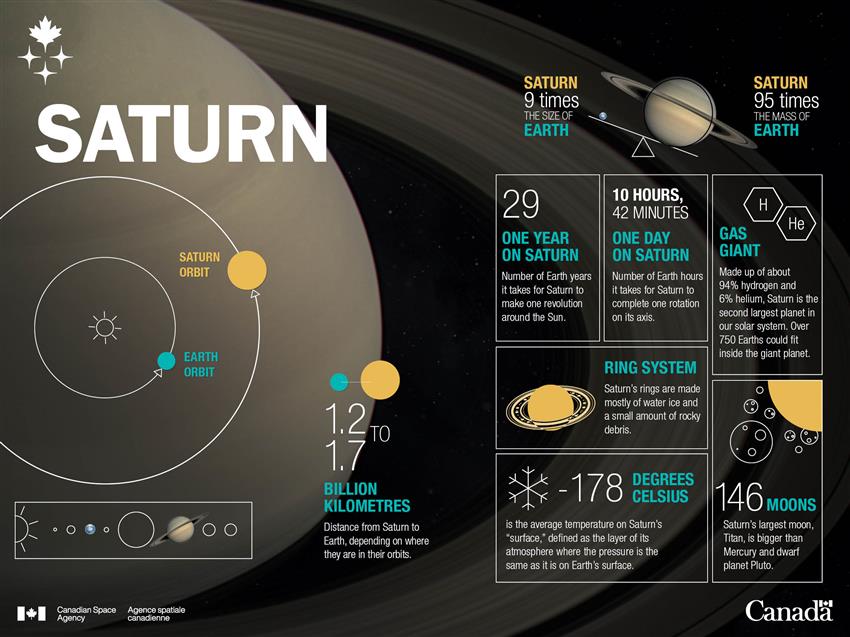Saturn in numbers – infographic

Description
Infographic about Saturn, the second-largest planet in the Solar system. (Credit: Canadian Space Agency)
Text version
This infographic features an image of Saturn along with a series of facts that highlight some of the differences between Saturn and Earth.
- A graphic shows that Saturn and Earth orbit the Sun in the same direction.
- The distance from the Earth to Saturn ranges from 1.2 to 1.7 billion kilometres depending on where they are in their orbits.
- Saturn is 9 times the size of Earth.
- Saturn is 95 times the mass of Earth.
- It takes Saturn 29 Earth years to make one revolution around the Sun.
- It takes Saturn 10 hours, 42 minutes in Earth time to complete one rotation on its axis.
- Saturn's rings are made mostly of water ice and a small amount of rocky debris.
- The average temperature on Saturn's "surface" is -178 degrees Celsius. The surface is defined as the layer of its atmosphere where the pressure is the same as it is on Earth's surface.
- Saturn is a gas giant. Made up of about 94% hydrogen and 6% helium, Saturn is the second largest planet in our solar system. Over 750 Earths could fit inside the giant planet.
- Saturn has 146 moons. Saturn's largest moon, Titan, is bigger than Mercury and dwarf planet Pluto.
File size: 0.34 MB
Image size: 2400 x 1800 pixels
Resolution: 144 dpi
Image date: January 21, 2020
Copyright / Permission to reproduce
- Date modified: